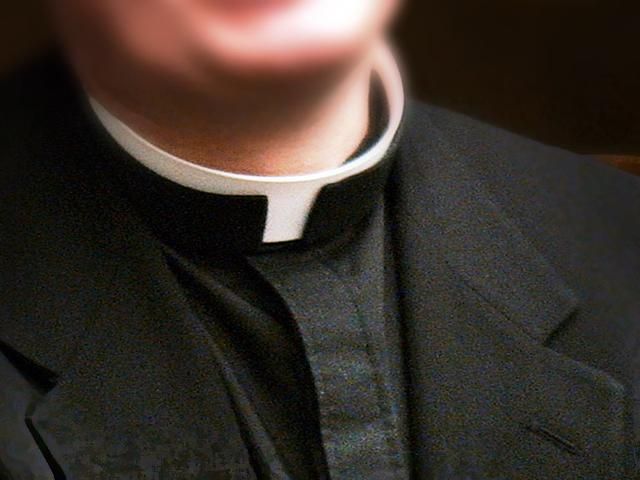| Former Jesuit Tino Paz |
Lynn Casmier-Paz and Augustine (who goes by Tino) Paz met in 1981 at St.
Louis University, where he was
studying philosophy with the intention
of becoming a Jesuit priest. They have been married 30 years and live in
central Florida, where she is an associate professor of English and he
has worked with various social service organizations. The couple has
three adult children. A condensed and edited version of our conversation
follows:
How did you meet?
Tino: Through her brother Stephen, who was a dorm mate of mine. Stephen
invited me to spend time with his family at Thanksgiving. We’re both
from large families, so I fit in quite well. And he had three beautiful
sisters, so that was a bonus.
Lynn: The first time I met Tino was when I’d come home to St. Louis for
Christmas from Loyola University in Chicago and went to visit my brother
in the dorm. I walked in and there was this guy with a scruffy beard,
having this intense debate with Stephen and holding his own. I
immediately respected his courage.
Was the attraction immediate?
Lynn: There is no doubt I was attracted. He was a strange character. He
came from Florida and he would wear a heavy jacket and flip-flops. His
face and feet were really tan even in the middle of winter. He was also
the only Cuban-American I had met.
Tino: I found her very interesting and good looking, but I was in St.
Louis to explore becoming a priest. We had great conversations, but it
really gradually developed into a romantic relationship. Stephen and
Lynn and I really just hung out a lot until he left to study abroad in
France.
Had you always wanted to be a priest?
Tino: No, I was studying to become a chemical engineer in Florida when
my grandmother, who was a very spiritual person and a great influence on
me, died. I decided that if I didn’t do something to make her proud I
would be throwing my life away. I told my dad I was changing my major
and he didn’t speak to me for weeks. But I needed a change of scenery
and a good friend’s father had graduated from St. Louis University.
Philosophy was my declared major.
How did the relationship evolve?
Lynn: Tino had come to become a priest. I respected that. But when my
brother left for France, we were still in St. Louis together; we were
able to share things with each other and speak more intimately. We were
always together on campus.
When did it feel like more than a friendship?
Tino: We had all our meals together on campus and we hung out all the
time, but I think the first date was the first time I decided to kiss
Lynn. We spent a lot of time just talking; all very platonic, but at one
point we were talking outside the dorm and I just kissed her; that was a
big turning point for me.
Lynn: We went to the St. Louis arch because he had never been. We were
together all day and night; had dinner and went to our separate dorms at
2 a.m. and that was the first date, the turning point. I had so much
fun.
How did that affect your path to the priesthood?
Tino: When I had my introduction with the seminary director, one of the
things he asked me was if I was dating and had I dated. I told him I
had, but was not currently, and he encouraged me not to withdraw from
romantic relationships at this point. That created room for possibility
for me; kissing her wasn’t going to decide things one way or the other
and I could explore my relationship with her. Toward the end of college
it became clear that my options were to go into the priesthood or marry
Lynn — and I wanted to marry Lynn. I wanted to make a life commitment.
The proposal?
Lynn: We were walking back to the dorms, laughing about something, and
he said, “I want to marry you.” He looked me right in the face and I
said, “Hell, no.” I didn’t take it seriously. This was early in the fall
of ’82 and we just kept going, but that’s when things got more
intensely romantic.
Tino: It was awkward. I realized that I wanted to do it, but I presented
it in a way like she almost didn’t have a choice; she didn’t take me
seriously and I didn’t argue. We continued our relationship and I wasn’t
going anywhere. Eventually she would come around. It was probably a
couple of months at most.
How did your families feel?
Lynn: He told my mother, who was very religious. Tino had a special,
pious relationship with her. I think she knew better than to question
his leaving the path to priesthood. She’d seen him with me all the time,
but I think also didn’t feel it was her position to ask.
Tino: The biggest issue was that Lynn is African-American. I knew that
wouldn’t go over well with my family. My father felt that I was
subjecting myself to racism. That was the one thing that made me think
about whether or not they would welcome and embrace Lynn. Father John Kavanagh at the university was the one who helped me to understand that
they may not, but that if this was the person I loved and I was not with
her I would have bigger regrets. They were resistant until we set a
date; then they knew this was serious and they all came to my wedding.
Stephen was surprised; he didn’t know until we were engaged that our
relationship had evolved.
And leaving the path to priesthood?
Tino: I realized that I could still work in service and continue to be
spiritually grounded without becoming a formal cleric. We are all called
to serve on different levels.
The wedding?
Lynn: Tino graduated in the spring and we got married July 23, 1983. It
was so low budget and it was so hot, like 103 degrees. We had the
reception at my mother’s house with a boom box in the backyard. It was
catered by our postman.
Link (here) to the full interview at the NYT





















